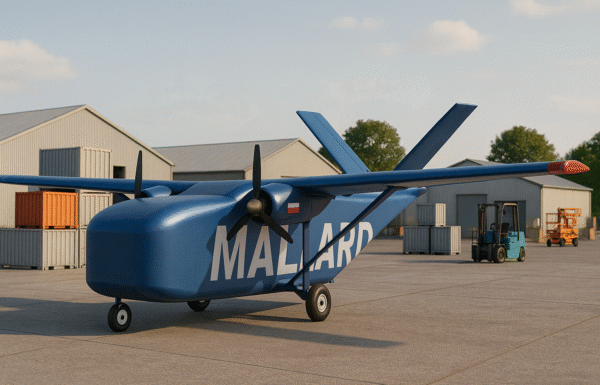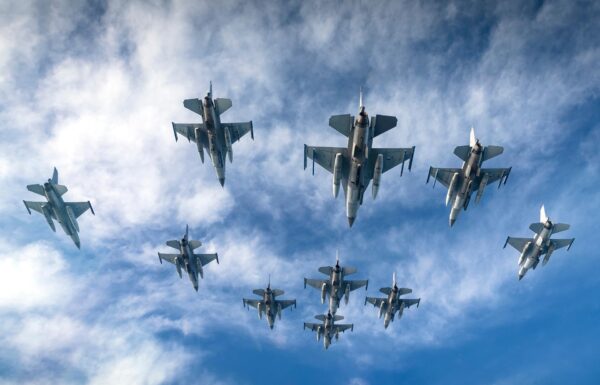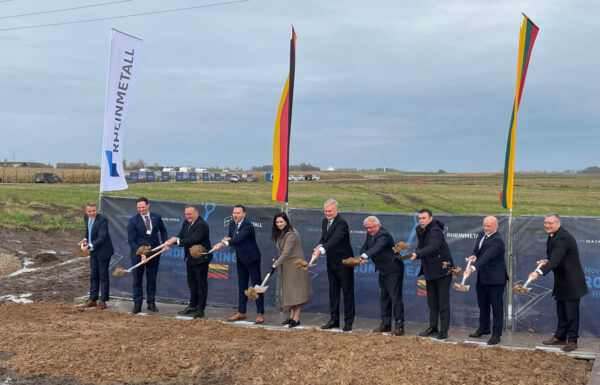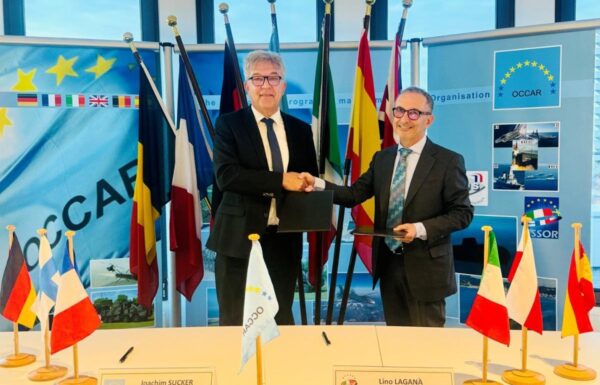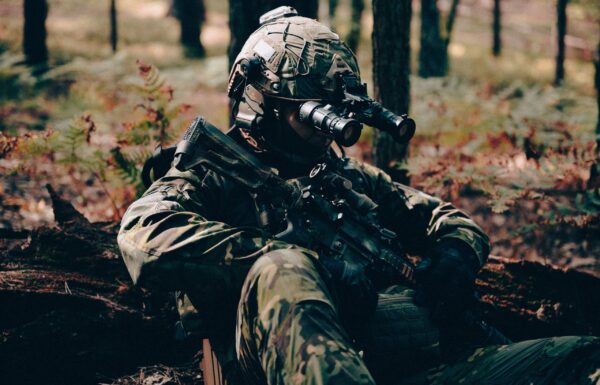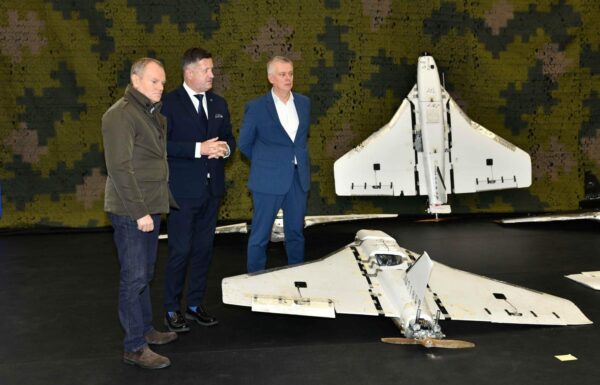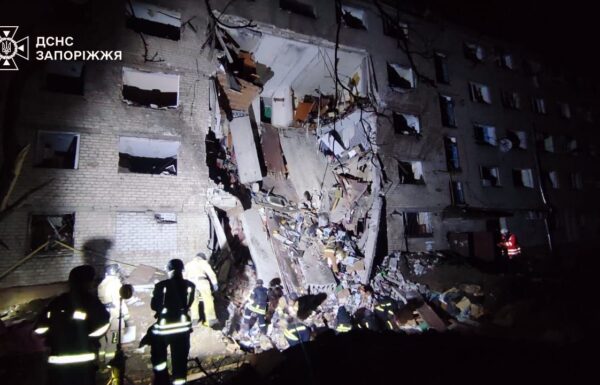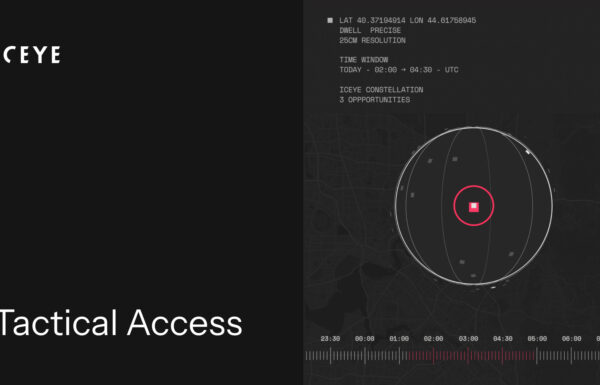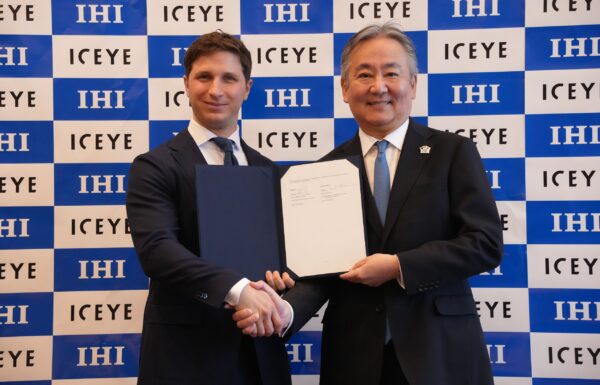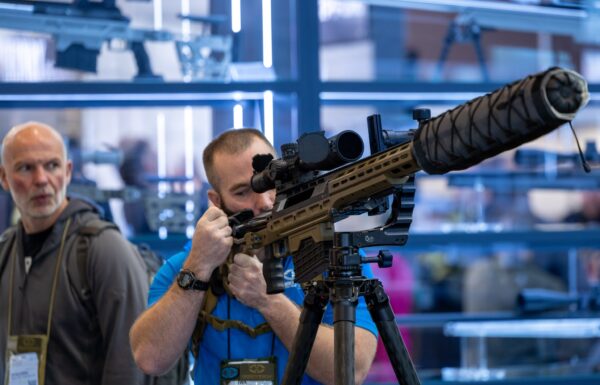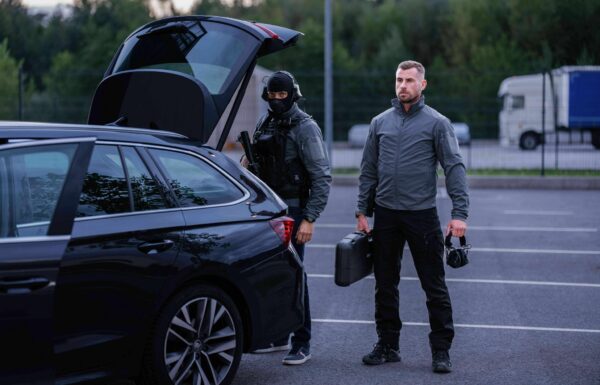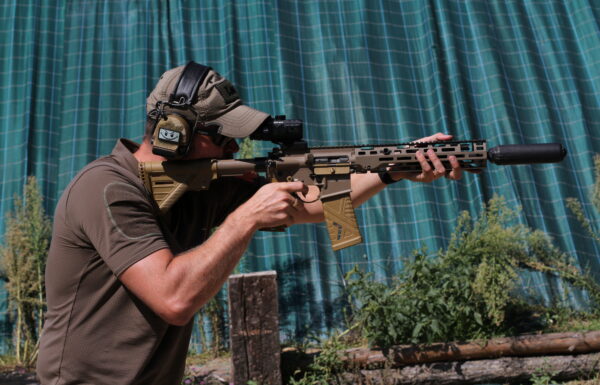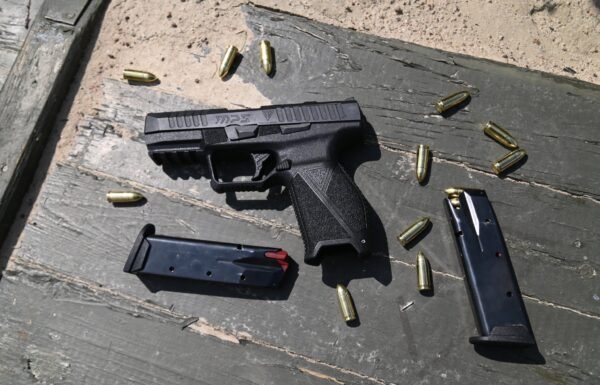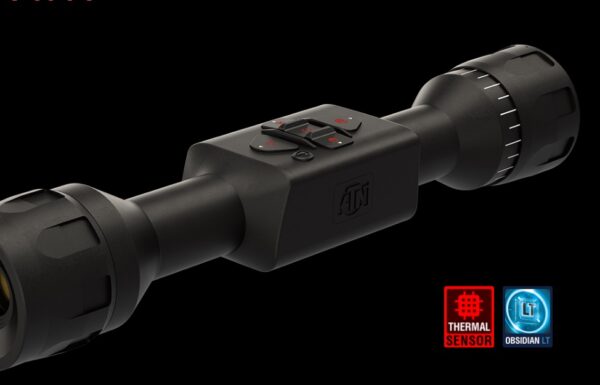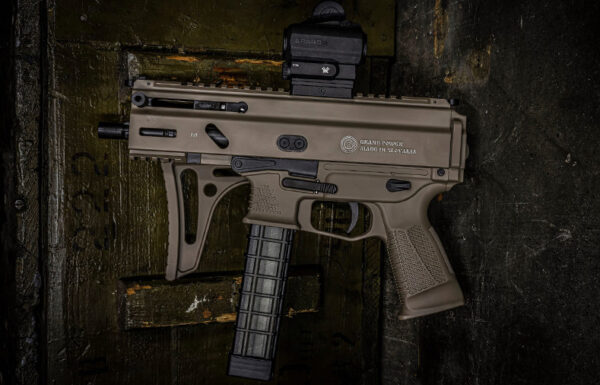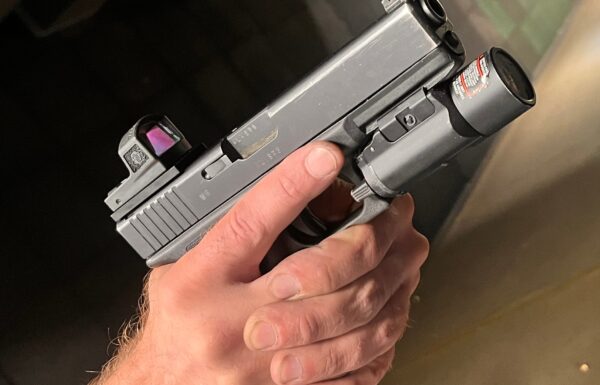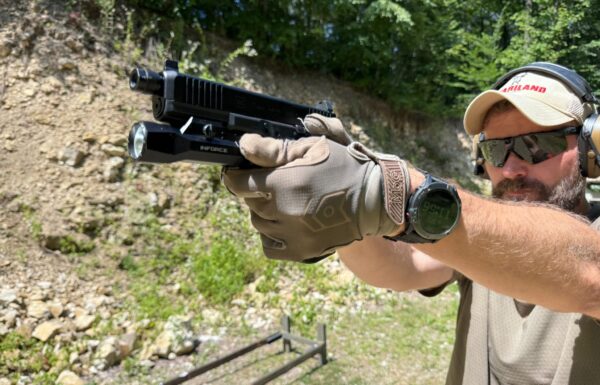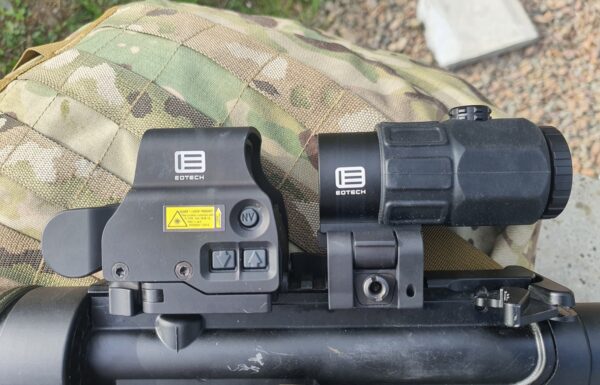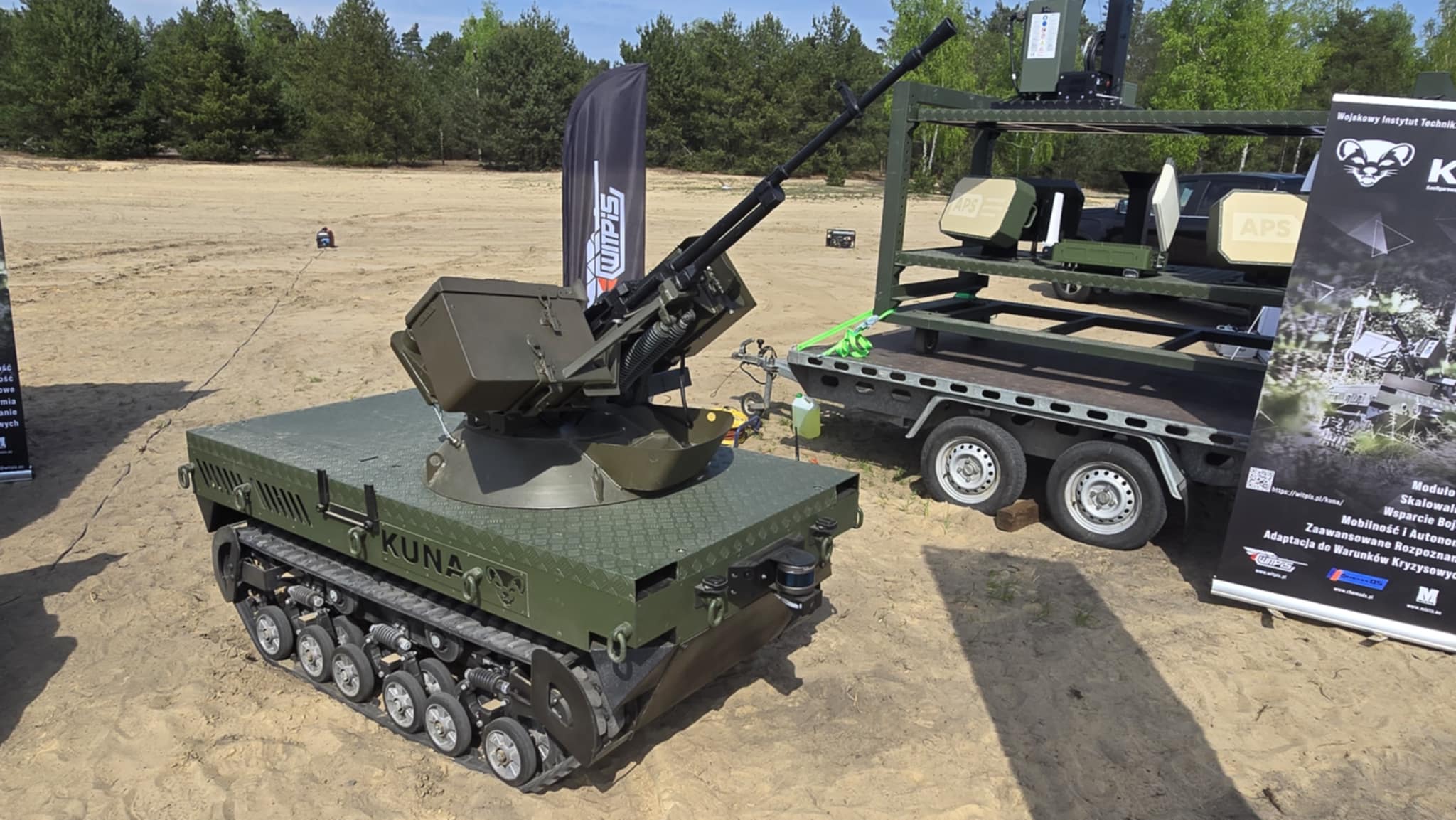On Thursday, April 24, 2025, during an exhibition of unmanned weapons systems by Polish manufacturers at the 1st Warsaw Armored Brigade in Wesoła, near Warsaw, the Military Institute of Armoured and Automotive Technology (Wojskowy Instytut Techniki Pancernej I Samochodowej, WITPiS) from Sulejówek presented the Kuna unmanned ground vehicle (kuna means martens in Polish—translators note).
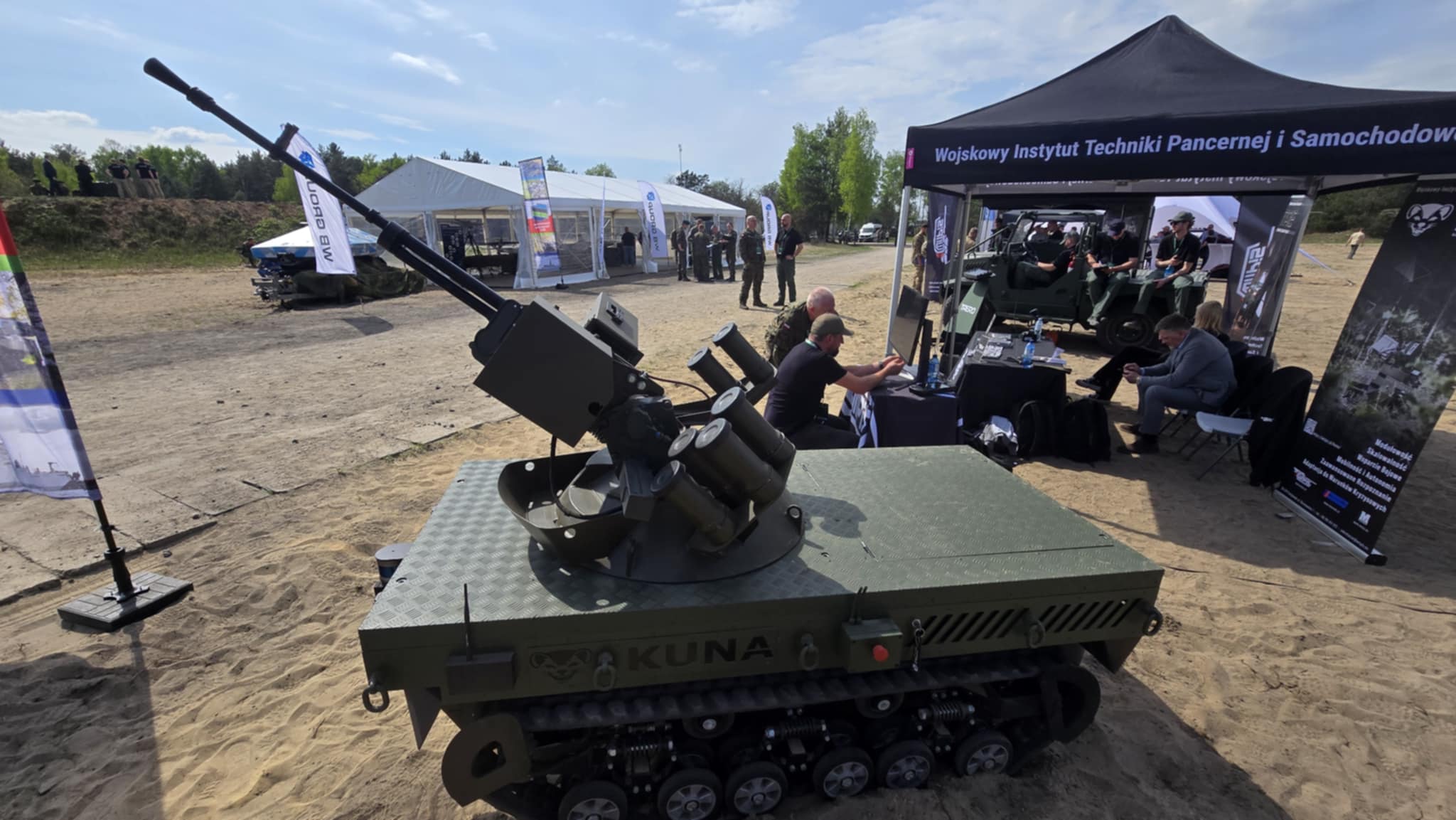 Photos: Jakub Link-Lenczowski, MILMAG
Photos: Jakub Link-Lenczowski, MILMAG
As emphasized by the Ministry of National Defence, building drone forces is a top priority for the current leadership of the ministry. Preparations for the creation of the Unmanned Weapons Systems Forces Component (BSU) have been underway since early 2024.
On January 1, 2025, the drone forces officially became a component of the Polish Armed Forces. By decision of Deputy Prime Minister and Minister of National Defence Władysław Kosiniak-Kamysz, the Inspectorate for Unmanned Weapons Systems was established within the Armed Forces General Command. It is headed by Brigadier General Mirosław Bodnar, Inspector for Unmanned Systems at the General Command.
This is why Polish entities presented their solutions during the industry event in Wesoła. One of them was the Kuna unmanned ground vehicle, previously unveiled at the 32nd International Defence Industry Exhibition (MSPO 2024) at Targi Kielce. The system, developed by WITPiS (as lead partner), CHEMA DS Sp. z o.o., and MISTA, was awarded the Defender Prize.
Kuna
According to the manufacturer, the Kuna Configurable Autonomous Multi-Purpose Platform is a comprehensive reconnaissance and operational support system designed to address the modern challenges of a rapidly evolving battlefield. The system responds to the operational needs of the Polish Armed Forces, Special Forces, Territorial Defence Forces, Police, and Border Guard in areas such as reconnaissance, counterterrorism, combating illegal migration, and crisis response. Its innovative concept is based on the integration of aerial drone technology with ground vehicles, enabling remote and precise operation in difficult or hazardous terrain.
The system was designed and built based on observations and experiences from the ongoing armed conflict in Ukraine. Together with its developed subsystems, it provides a versatile response to the identified needs of Ukrainian Special Forces operators in challenging combat conditions—needs derived from their insights, feedback, and conclusions drawn from the realities of modern warfare. The system has a modular, multi-role structure that can be configured depending on mission-specific requirements. Its main components are the Kuna unmanned ground platform and the Raven unmanned aerial vehicle.
The Kuna vehicle can autonomously travel to a designated location, while the Raven drone conducts aerial surveillance and returns to the vehicle’s current position. The drone also serves as a data relay, enabling remote control of the Kuna vehicle via the drone. This solution significantly extends the vehicle’s effective operational range and the range of telemetry and video data transmission, which is crucial for operations in difficult terrain—particularly in environments with limited access to GNSS signals.
Key features of the system include:
- Mobility and Autonomy:
Kuna Vehicle: This unmanned operational vehicle serves as a mobile base that can be either remotely controlled or operate autonomously. Its autonomous capabilities allow it to navigate terrain and reach designated locations without an onboard crew. Both route programming and remote control can be carried out via the aerial drone, significantly extending the vehicle’s operational range. Equipped with laser-radar (LiDAR) sensors, cameras, and other detection systems, Kuna is capable of autonomously avoiding obstacles, greatly enhancing its ability to operate in unpredictable environments. Its tracked chassis provides high mobility, enabling it to traverse uneven, sandy, muddy, and even rocky terrain—areas where wheeled vehicles may struggle. Kuna can be easily adapted to a variety of missions thanks to interchangeable modules designed with logistics in mind. These modules feature mounts for specialized tools, sensor packages, and effectors. A transport module enables the vehicle to carry various types of cargo, from tools and equipment to construction materials or humanitarian supplies. Both the vehicle and its modules are equipped with built-in forklift access points, simplifying loading, unloading, and reconfiguration.
- Advanced Reconnaissance and Combat Support:
Raven Drone is an advanced unmanned platform developed for military and law enforcement applications. The platform was designed and modified based on lessons learned from the conflict in Ukraine. Raven is a versatile tool that excels in challenging environments, enabling effective operations where traditional solutions may be insufficient or too risky. With a payload capacity of up to 12 kg, Raven can deliver critical equipment and supplies directly to the operational area, as well as carry out direct support missions.
The drone has a maximum takeoff weight of 24 kg and is equipped with advanced navigation systems and artificial intelligence, enabling it to conduct missions autonomously—even in environments where GPS signals are unavailable or disrupted. For this reason, Raven is fitted with a dead-reckoning navigation system to assist in operating without access to traditional GNSS infrastructure. As demonstrated by the conflict in Ukraine, GNSS signals are often jammed or spoofed, which necessitates the use of alternative navigation systems that can be easily integrated with flight controllers. Raven features a control range of up to 15 km and can operate in BVLOS (Beyond Visual Line of Sight) mode, allowing for the monitoring of vast areas from a safe distance. It can fly for up to one hour at speeds of up to 45 km/h, and its advanced stabilization systems enable precise operations even in strong winds of up to 17 m/s. Additionally, Raven is equipped with systems for easy management of frequency bands, control links, and telemetry and video transmission. This is also a direct response to battlefield realities observed in Ukraine, where frequency warfare and counter-electronic warfare (EW) measures play a crucial role in unmanned operations.
The system has undergone rigorous testing, confirming its reliability and resistance to electronic interference. Raven is outfitted with an advanced radionavigation system that enables autonomous operation in GNSS-denied environments. The system is fully integrated with the drone’s flight controller, allowing the use of standard navigation algorithms and sensor fusion, maintaining flight stability and precision. These capabilities make Raven a highly advanced tool capable of performing missions in the most demanding conditions—an indispensable asset for armed forces and uniformed services.
- Flexibility and Adaptation to Crisis Conditions:
The system enables effective operation in varying terrain and environmental conditions, which is crucial for missions on the modern battlefield. Thanks to its operational flexibility, the system can be rapidly adapted to specific mission requirements, such as counterterrorism, combating illegal migration, or operations in the context of hybrid warfare. It performs exceptionally well in crisis situations where rapid response and unmanned delivery of equipment are essential. With its components capable of autonomous operation, the system proves invaluable in rescue operations, particularly in remote and hard-to-reach areas.
The system was designed and built based on observations and experiences from the ongoing armed conflict in Ukraine. It integrates advanced mobility and surveillance technologies, offering unique capabilities in reconnaissance and operational support. Along with its developed subsystems, it provides a comprehensive response to the demands of the modern battlefield. The system is distinguished by its scalability and modularity. Its modular, multi-purpose structure can be configured to meet specific mission requirements. The interchangeable modules include mounts for specialized tools, sensor packages, and effectors, while the transport module enables the delivery of a wide range of cargo—from tools and equipment to humanitarian supplies—making it highly useful in logistics operations. Thanks to the advanced integration between the Kuna vehicle and the Raven drone, this system serves as a modern tool for executing a wide spectrum of military and special operations—from counterterrorism to hybrid warfare scenarios. It is an innovative solution that sets new standards in reconnaissance and specialized equipment, meeting the evolving needs of military and uniformed services.



